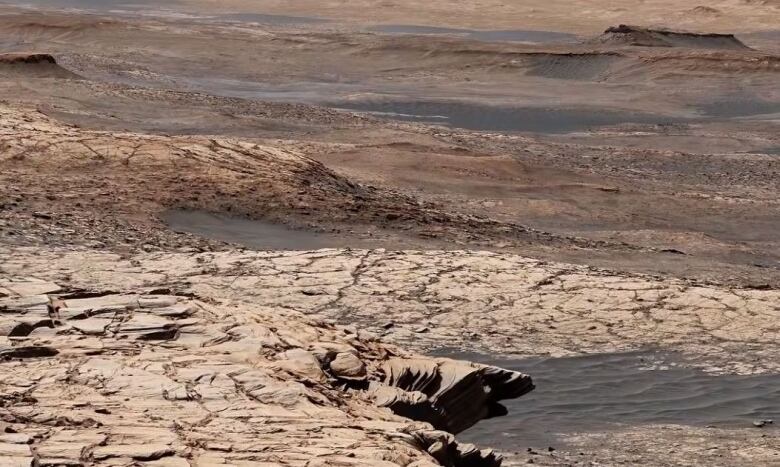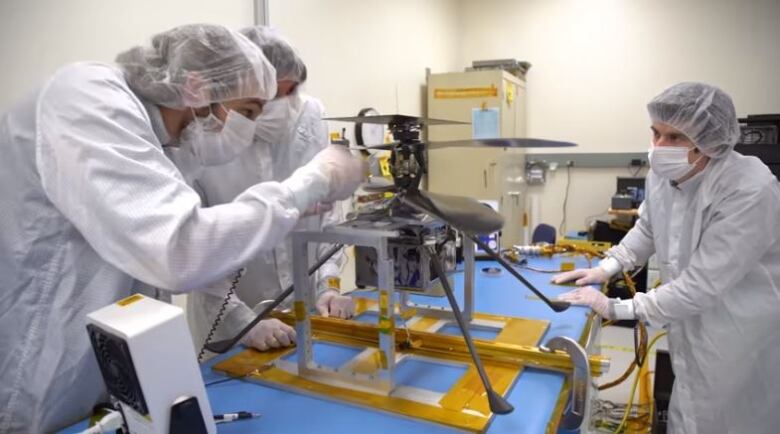Brock professor lands Mars mission role
Ive always wanted to be a part of the mission and now I get to do it, Mariek Schmidt says

When the Perseverance rover lands on Mars this week, Mariek Schmidt will be ready to search for signs of ancient life albeit from millions of miles away.
The Brock University earth sciences professor is a participating scientist with the NASA Mars 2020 Mission scheduled to land at the red planet's Jezero Crater on Thursday, Feb. 18.
This will be Schmidt's third Mars rover mission.
"I was very excited. I've always wanted to be a part of the mission and now I get to do it so it's pretty cool," Schmidt told CBC Hamilton.
"The most exciting part of it is the discovery, when you see something that's unexpected. That's part of the goal for now, to look for signs of potential life," Schmidt said.

Supported by the Canadian Space Agency, Schmidt will represent Brock as one of five scientists from a Canadian institution. She is one of 13 participating scientists who were chosen for the role from 119 applicants.
Collect rock and soil samples
Perseverance will collect rock and soil samples for eventual return to Earth by 2034.
The rover is fitted with seven key instruments, each with their own team to facilitate their use.

Participating scientists propose ways to use the instruments for their own research and data collection.
"The rover itself is not necessarily going to be able to detect life unless something really unusual is found like a macro fossil, something you can actually see with your eye," Schmidt said.
"But more likely what is going to happen is that the scientists on the mission are then going to go and look at the geology, try to interpret the geology and then identify samples that might have indication of past life. So we'll collect some samples from geologically promising places and then eventually those samples will be returned to earth."
However, Schmidt cautioned, "It won't be until we actually get samples back on earth that I think we'll be able to really know whether or not life once existed on Mars."
Planetary Instrument for X-Ray Lithochemistry
Schmidt will focus on using an instrument called the PIXL.
The Planetary Instrument for X-Ray Lithochemistry (PIXL) is an x-ray fluorescence spectrometer used to determine the fine scale elemental composition of Martian surface materials.
"It measures elemental compositions of very small spots (100 microns across) along a grid on the surface of a rock or soil," Schmidt said.

Understanding the composition of a rock is critical for determining mineralogy and understanding textures.
"I'll be looking at dust on the surface of rocks," Schmidt said. "I'll be trying to remove the dust and understand how dust influences the chemistry that is measured in order to get at a dust-free rock composition."
Schmidt said the PIXL is an improvement over similar instruments, "because it is able to deliver micro-texture information about the distribution of elements. The one downside is it takes a longer time to perform a scan."
The Ingenuity Mars Helicopter
Patience and perseverance are important on interplanetary missions. The average driving distance of the Curiosity rover and its successor Perseverance is about 100 metres per Sol, or one Martian day. Curiosity travelled just 20 kilometres over eight years.

An exciting upgrade in mobility for this mission is the inclusion of a drone called the Ingenuity Mars Helicopter. Drone flights will allow advanced mapping capabilities of areas too challenging for the rover to reach.
"The Perseverance rover is step one," Schmidt said. "A different rover will need to fetch the samples collected by Perseverance. The samples will then need to be launched into orbit with another spacecraft to transport safely home."
Schmidt said scientists will look to see if they can find basaltic glass samples on Mars to bring home for further analysis that could help prove whether life did, at one point, exist on the planet.
Advice to young, aspiring scientists
Schmidt has some words of advice for young and aspiring scientists.
"Science is more than memorizing facts. Science is knowing how to do problem solving and being creative," she said.
"So for those students that are really interested in space, getting experience with math as well as art and writing can really help with being ready to do space science."
Brock University's mathematics and science Dean Ejaz Ahmed is proud of Schmidt's selection and her research.
"Exploring new planets is a pinnacle of science, done under challenging circumstances and with the potential for remarkable rewards," he said.












_(720p).jpg)


 OFFICIAL HD MUSIC VIDEO.jpg)
.jpg)



























































































